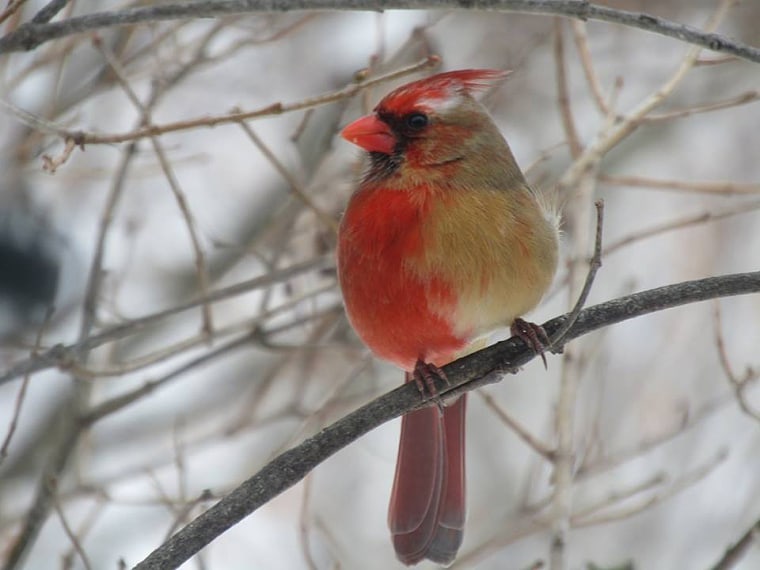Known as gynandromorphs, scientists say the creatures are extremely difficult to study because they are so rare.
Feb. 7, 2019, 2:16 AM GMT
By Ben Kesslen
Shirley and Jeffrey Caldwell don’t fashion themselves professional birdwatchers, but they dabble.
“We just watch out the window, and we have some feeders,” Shirley told NBC News.
But they know enough about birds to notice the cardinal that arrived in their backyard in Erie, Pennsylvania, about a month or so ago was “unusual.”
 |
| Shirley Caldwell took this photo of a rare gynandromorphic cardinal through her kitchen window.Shirley Caldwell |
Two weekends ago, they got their first good look at the strange bird. They snapped some pictures of it through their kitchen window, amazed by what they saw.
“It was really a once in a lifetime thing,” Shirley said. “My first time seeing one and probably my last time.”
The cardinal they saw was half-red and half-tan, the colors split directly down the middle, like two bird halves combined.
There’s a name for this type of creature in the scientific community: a gynandromorph. In layman’s terms, it’s an animal that is half male, half female.
Gynandromorphs have been found among insects, birds, and even chickens, but can’t always be spotted.
Because male and female cardinals look markedly different, the gynandromorphs among them can be easily spotted.
No comments:
Post a Comment